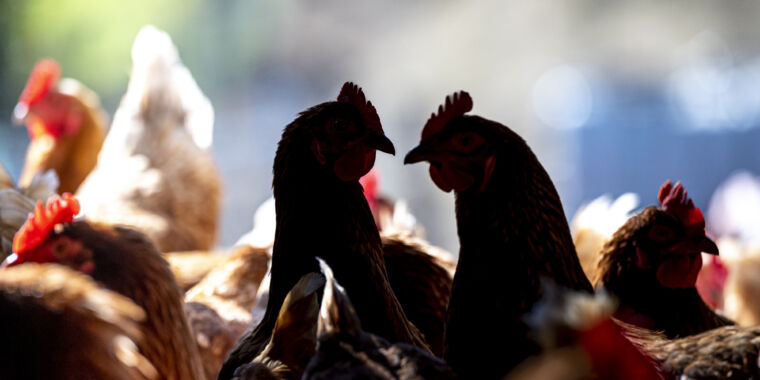A second poultry farm in Colorado has reported a case of avian flu among its employees, leading to the state’s first reported case of the virus. The seventh case this month The infection continues among dairy cows.
Colorado health officials said the seventh case has so far been determined to be a provisional positive, meaning the person has tested positive at the state level and a confirmatory test is pending with the Centers for Disease Control and Prevention.
The suspected positive worker worked at a poultry facility in Weld County in the northeastern part of the state. In recent weeks, six workers at another poultry facility in Weld have also tested positive for avian influenza. The facility is a commercial egg-laying chicken farm with about 1.8 million chickens, and the workers became infected when they culled chickens known to be infected with highly pathogenic avian influenza. Genetic testing of the virus in the chickens and workers revealed that they were infected with the H5N1 strain, which is closely related to the virus spreading among dairy cows and dairy workers.
From birds to cows, chickens, and humans
The USDA confirmed in late March that H5N1 avian influenza, which had been circulating worldwide among wild birds for years, had unexpectedly infected dairy cows in the United States. To date, at least 168 herds in 13 states have tested positive for the virus. Eleven people have contracted the virus in the dairy cow outbreak. Four of the cases are dairy workers, one in Texas, two in Michigan and one in Colorado, reported earlier this month. The remaining seven are poultry workers, all of whom live in Colorado. (A Colorado poultry worker was the first known human case of H5N1 in 2022, before the virus infected cows.)
The recent spate of human infections among poultry workers in Colorado is noteworthy, given that H5N1 influenza has been raging in U.S. poultry farms since January 2022. To date, there have been more than 1,000 outbreaks in 48 states, affecting more than 100 million birds. The majority of these cases are believed to have been contracted directly from wild birds to poultry, which are highly susceptible to avian influenza. However, the surge in cases among poultry workers has only been seen since the virus moved from wild birds to dairy cows and then to poultry.
Genetic tests so far have not found any major changes in the virus that could explain the recent increase in cases and trigger new alarm. There is no evidence of human-to-human transmission, and the CDC still assesses the risk of H5N1 to the general public as low. Moreover, all confirmed human infections to date have been mild and appear to respond to influenza antiviral medications. At a press conference last week, federal officials noted that the extreme summer heat could be contributing to the rise in human infections. With temperatures topping 100 degrees Fahrenheit and industrial fans blasting, Colorado poultry workers tasked with culling chickens struggled to remove their masks and goggles from their faces.
It is also unclear at this latest stage of the outbreak how the virus is spreading from dairy farms to chicken farms. But it may not be surprising that Colorado is one state in the U.S. where we are seeing virus spillover from dairy farms to chicken farms. Colorado has reported 46 of the nation’s 168 infected flocks, the most of any of the 13 states affected by the outbreak. Weld County in particular has reported flocks with more than 24 infected chickens.


